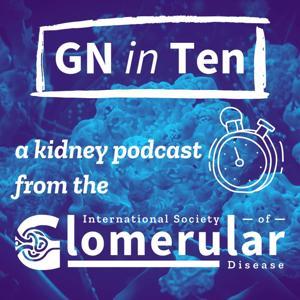Outline: Chapter 3 - This is chapter three, kind of the first real chapter of the book
- Proximal Tubule
- Reabsorbs 55-60% of the filtrate
- Active sodium resorption
- 65% of the sodium
- 55% of the chloride
- 90% of HCO3
- 100% glucose and amino acids
- Passive water resorption
- Water resorption is isosmotic
- Secretion of
- Hydrogen
- Organic anions
- Organic cations
- Anatomy
- S1, S2, S3 can be differentiated by peptidases
- S1 more sodium resorption and hydrogen secretion, high capacity
- S2 more organic ion secretion
- Cell model
- Basolateral membrane
- Na-K-ATPase powers all the resorption
- Luminal membrane
- 100 liters a day crosses the proximal tubule cells
- Microvilli to increase surface area
- Microvilli has brush border which has carrier proteins as well as carbonic anhydrase
- Water permeable, so sodium resorption leads to water resorption
- Aquaporin-1 (sounds like this transporter is unique to the proximal tubule and RBC)
- HCO3 is reabsorbed early, along with Na, resulting in increased chloride concentration which passively reabsorbed via paracellular route.
- Tight junction has only one strand (on freeze fracture) as opposed to 8 in distal nephron
- The Na-K-ATPase
- Lower activity than in the LOH and distal nephron
- Maintained intracellular Na at effective concentration of 30 mmol/L
- Interior of the cell is negative due to 3 sodium out and 2 K in, then K leaks back out.
- 3 Na out for 2 K in
- An ATP sensitive K outflow channel on the basolateral membrane
- Increased ATP slows potassium eflux
- The idea is if Na-K slows, ATP will accumulate and this will slow K leaving, because there is less potassium entering.
- K channel is ATP sensitive, ATP antagonizes K leak.
- Highly favorable ELECTROCHEMICAL gradient for sodium to flow into the cell through the luminal membrane
- Must be via a channel or carrier
- Cotransporters
- Amino acids
- Phosphate
- Glucose
- Called secondary active transport
- Countertransporters
- Only example is H excretion
- Basolateral membrane
- Na-3HCO3 transporter
- Powered by the negative charge in the cell
- Chloride resorption
- Formate chloride exchanger
- Formate combines with hydrogen in the lumen, becomes neutral formic acid, and is reabsorbed where the higher pH causes it to dissociate and recycle again.
- Dependent on continued H+ secretion
- Chloride moves across basolateral membrane thanks to Cl and KCl transporters, taking advantage of negative intracellular charge
- Passive mechanisms of proximal tubule transport
- Accounts for one third of fluid resorption
- Mechanism
- Early proximal tubule resorts most of the bicarb and less of the chloride
- Tubular fluid gets a high chloride concentration
- Chloride flows through the tight junction down its concentration gradient
- Sodium and water follow passively behind
- Water moves osmotically into intercellular space from tubular fluid even though the osmolalities are equal since chloride is an ineffective osmole, so tonicity is not the same. ******
- Argues that bicarb is primarily important solute for passive resorbtion
- Acetazolamide blocks Na and chloride resorption
- Similar thing happens with metabolic acidosis where less bicarb is available to drive passive resorbtion of Na and Cl
- Summary
- Other than Na-K-ATPase Na-H antiporter main determinant of proximal Na and water resorption
- 1. Direct bicarb resorption
- Preferential bicarb resorbtion proximally drives passive chloride resorption
- Drives active the formate exchanger for chloride resorption
- Neurohormonal influence
- AT2 drives a lot of Na resorption, primarily in S1 segment
- Does not have a net effect on H-CO3 movement
- Dopamine antagonizes sodium resorption
- Blocks both Na-K-ATPase and
- Na H antiporter
- Capillary uptake
- Starlings. Again
- Low hydraulic pressure due to glomerular arteriole
- High plasma on oncotic pressure from loss of the filtrate
- The two together promote resorption
- There maybe movement from interstitial back into tubular fluid (back diffusion) conflicting data
- Glomerular tubular balance
- The fractional tubular reabsorption remains constant despite changes in GFR (tubular load)
- It is essential the GFR is matched by resorption
- The rise in capillary osmotic pressure with increased GFR via increased filtration fraction is one mechanism of GT balance
- Glomerular tubular balance os one of three mechanisms that prevents fluid delivery from exceeding the resorptive capacity of the tubules
- GT balance
- TG feedback
- Autoregulation
- GT balance can be altered if patients are volume overloaded or depleted
- Closes this section with a story of a kid born without a brush border
- Primacy of sodium in proximal tubule activity
- Discusses bicarb resorbtion
- There is no Tm for Bicarb as long as volume overload is prevented, in rats can rise over 60!
- If you give NaHCO3 you get volume overload and the Tm I about 60
- Glucose
- S1 and S2 have high capacity, low affinity glucose resorption
- S3 has high affinity 2 Na fo every glucose
- Tm glucose is 375 mg/min
- For a GFR of 125t that comes out to 300mg/dL
- 125 ml/min * 3mg/ml (300 mg/dL) = 375 mg/min
- Functionally this is 200 mg/dL due to splay
- Urea
- Only 50-60 of filtered urea is excreted
- Calcium Loop and distal tubule
- Phosphate
- 3Na-Phosphate high affinity transporters late in proximal tubule
- three types of Na-Phos transporters, type 2 are the most important
- regulated by PTH and plasma phosphate
- PTH suppresses Phos resorption
-Metabolic acidosis also reduces phosphate resorption (good to have phosphate in the tubule to soak up H+
- Decreased tubular pH converts HPO42- to H2PO4- which has lower affinity for phosphate binding site
- Mg Loop and distal tubule
- Uric Acid


































